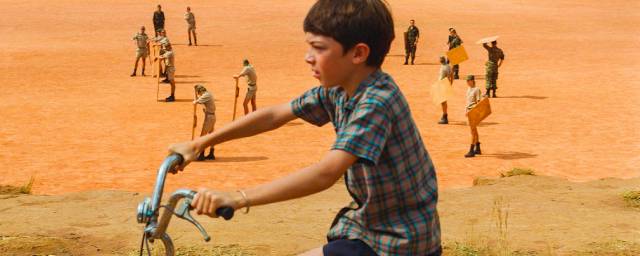After 120 beats per minute, here is the return of Robin Campillo, at the cinema this Wednesday. After 6 years of waiting, the filmmaker unveils a new romantic and ambitious film, which takes us to Madagascar in the 70s.
What is it about ?
In the early 1970s, on a French army base in Madagascar, soldiers and their families lived through the last illusions of colonialism.
6 years after 120 beats per minute, director and screenwriter Robin Campillo unveils his new feature film, L’île rouge. After the critical and public success of his previous film (nearly 900,000 admissions), 6 Césars including that of the best feature film, the Grand Prix of the Cannes Film Festival in 2017, it is an understatement to say that this new film is expected.
Gilles Marchand
Robin Campillo succeeds in the bet of renewing himself, with a story very distant from that told in 120 beats, but while keeping what made the beauty and richness of the previous one: that of mixing truth and pure imagination, autobiography and fantasized memories.
The filmmaker puts memories into perspective, while taking great liberty to inject a lot of fiction and romance. The staging is very inventive, and surprises from the first image.
The filmmaker opts for a square 1:37 format and for certain sequences, in memory of childhood daydreams, it is a cardboard aesthetic that takes over.
So there is change in continuity, you could say. This continuity is ensured by the ambition displayed by the film, starting with an aesthetic ambition therefore, and a particular care given to the writing of the heroes. Robin Campillo paints the portrait of several characters, a family and its friendly and professional entourage.

Gilles Marchand
The red island leaves plenty of room for the sensations of childhood. The spectator is placed at the height of a child, precisely the young hero embodied by Charlie Vauselle, whose first role in the cinema.
A boy “both joyful and lunar“, inspired by the director’s childhood.”What I tried to do was to put my memories into perspective, not to find historical or autobiographical truth, but rather to create a sensory world, that of Thomas. A nascent consciousness that discovers things without fully understanding them“, explains Robin Campillo in the press kit.
Less a historical film than a sensory journey through this period
We see him observing the conversations of the grown-ups. The film very accurately captures the vision that a child can have of adults. While taking us into his teeming imagination.
“The film espouses an imaginary made of exotic daydreaming, of details that [le héros] perceives as exciting or threatening, hearsay where historical events shine through. As a result, certain scenes (…) have an ambiguous status, without knowing what their degree of reality or fantasy is.

Gilles Marchand
Charlie Vauselle
And to add:From this point of view the film is less a historical film than a sensory journey through this period. Besides, I wanted to find almost a dream logic in the sequence of scenes as if a word heard or a material could lead to another sequence“.
The red island carries a historical and political subject, delicately intertwined with the family chronicle part. The more political side of the film is especially present in its last part.
“When I left Madagascar and came back to France, I was still small, I obviously had no awareness of colonialism. However, even though I had nostalgia for this lost paradise, I felt that we had been an anomaly in this country. (…)
And if I made this film it is precisely to update the backstage of this nostalgia. To lay bare the silent violence of an apparently peaceful daily life, yet charged with the echoes of the 1947 repression.
Because this lost paradise was above all a stolen paradise. (…) We stole the happiness of living on this island. While our presence in this country had a very simple reason: France wanted to keep a strategic place in the Indian Ocean.“.
The cast shows us Nadia Tereszkiewicz, César for Female Revelation at the last César ceremony (for The Almond Trees by Valeria Bruni Tedeschi), and Quim Gutiérrez (seen recently in Un an, une nuit). Special mentions also for Amely Rakotoarimalala, Hugues Delamarlière, Sophie Guillemin and David Serero.
Note that L’île rouge is produced by the co-producer of Anatomy of a Fall, Palme d’or 2023: Marie-Ange Luciani (Les Films de Pierre).
Find all the cinema releases of the week
L’île rouge, directed by Robin Campillo, co-written by Robin Campillo, Gilles Marchand and Jean-Luc Raharimanana, will be released in theaters this Wednesday, May 31, 2023.
